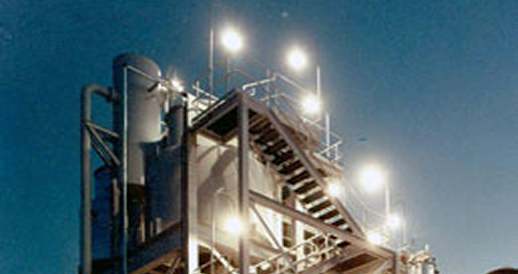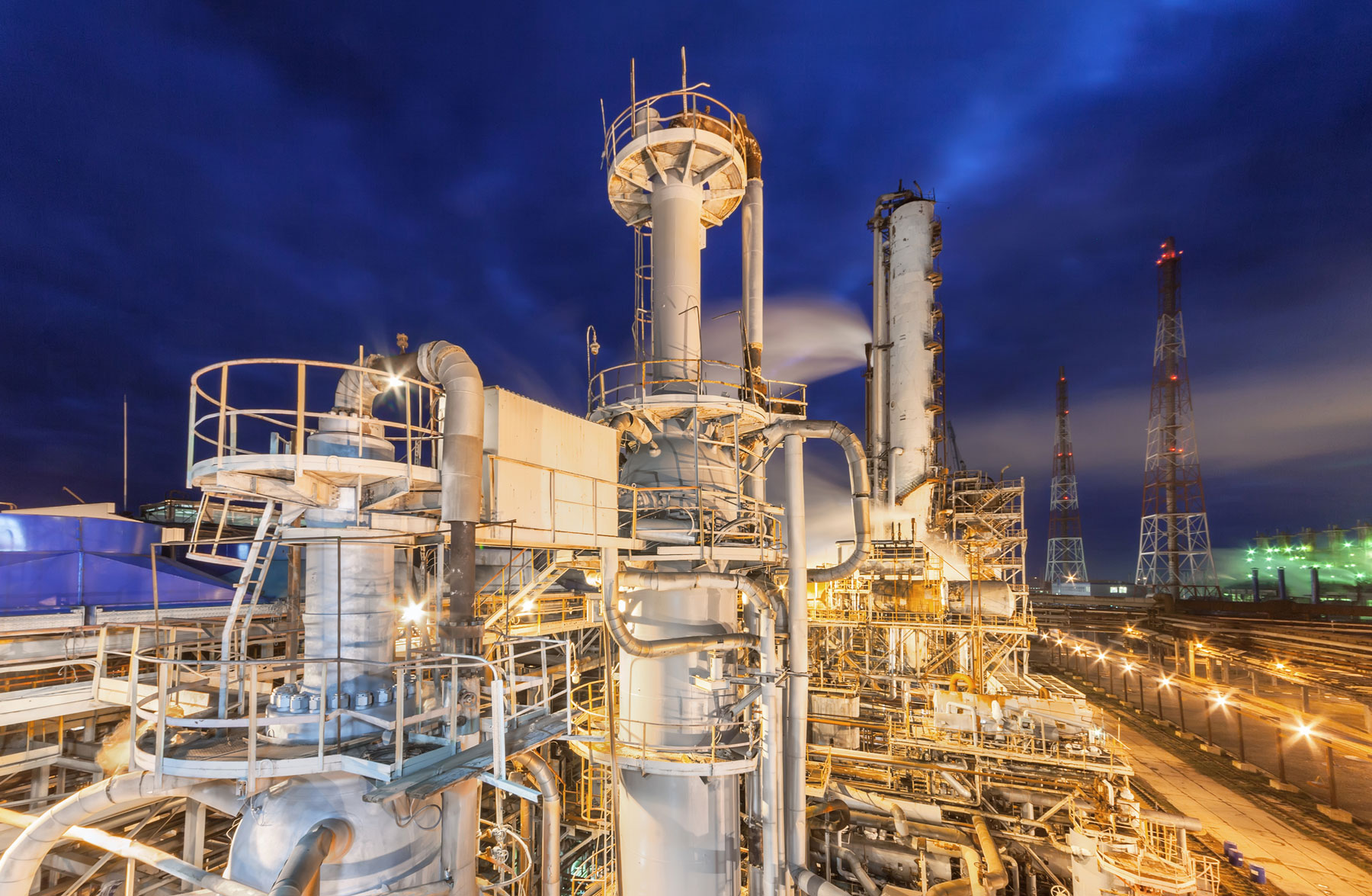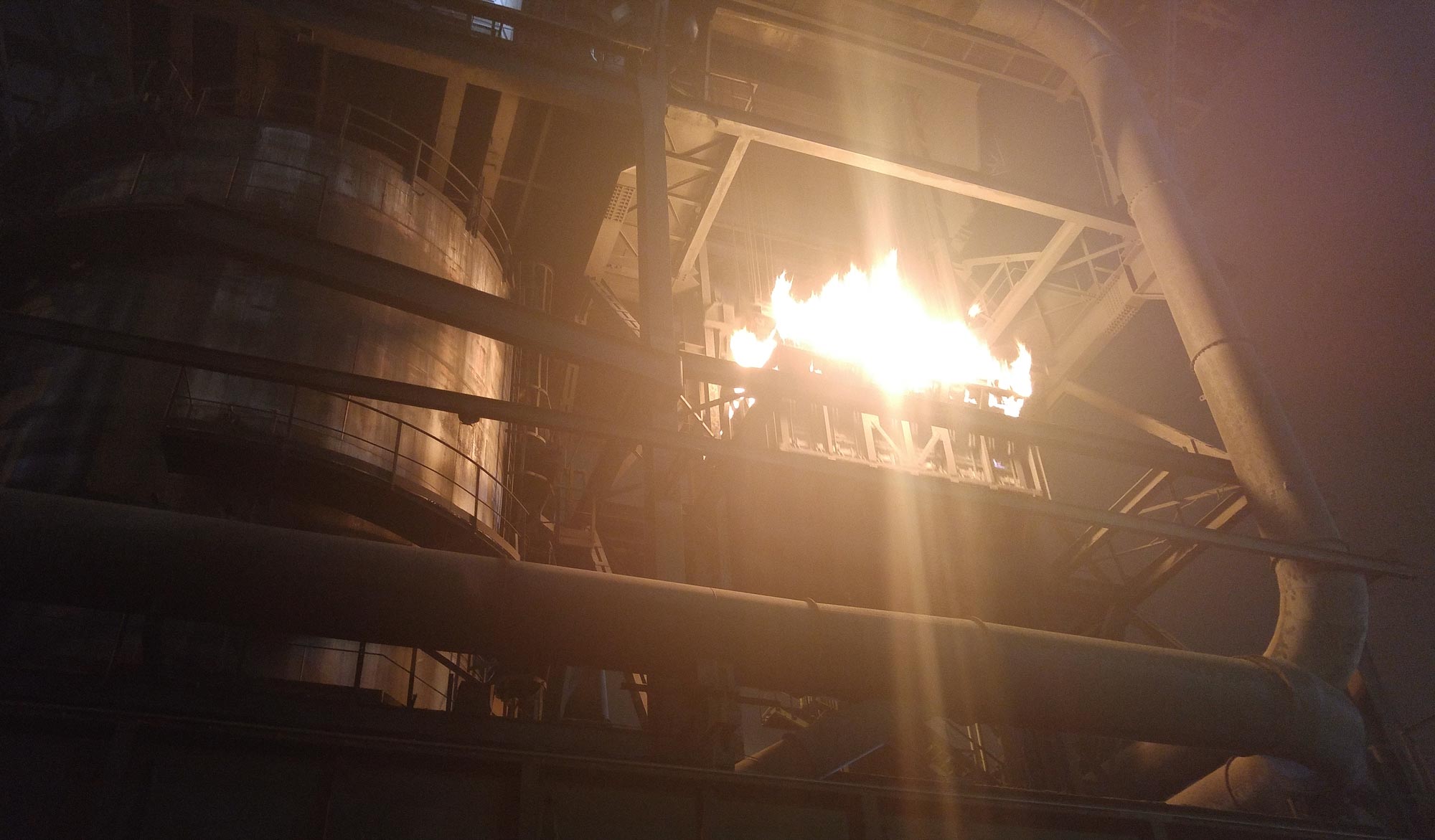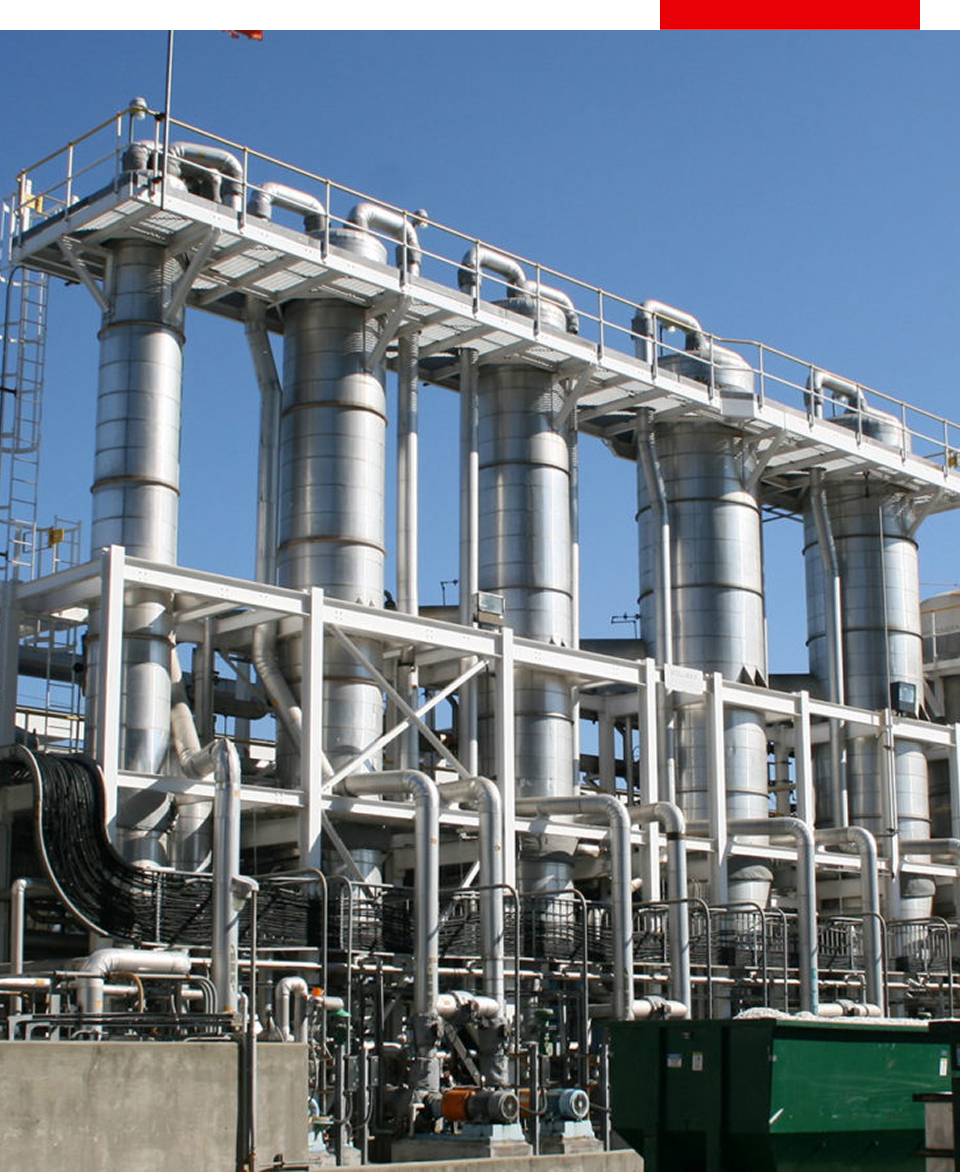Falling-Film vs Forced-Circulation: Selection Guide
Selecting the right industrial evaporator can make the difference between smooth, cost-efficient processing and persistent fouling issues. In industries that deal with scaling brines—particularly those involved in lithium production from high-chloride sources—making the correct choice between falling-film vs forced-circulation evaporators is crucial. Both designs are proven technologies, but each behaves differently when exposed to aggressive streams with high dissolved solids. This guide compares the two, focusing on performance, fouling tendencies, energy use, and long-term operability.
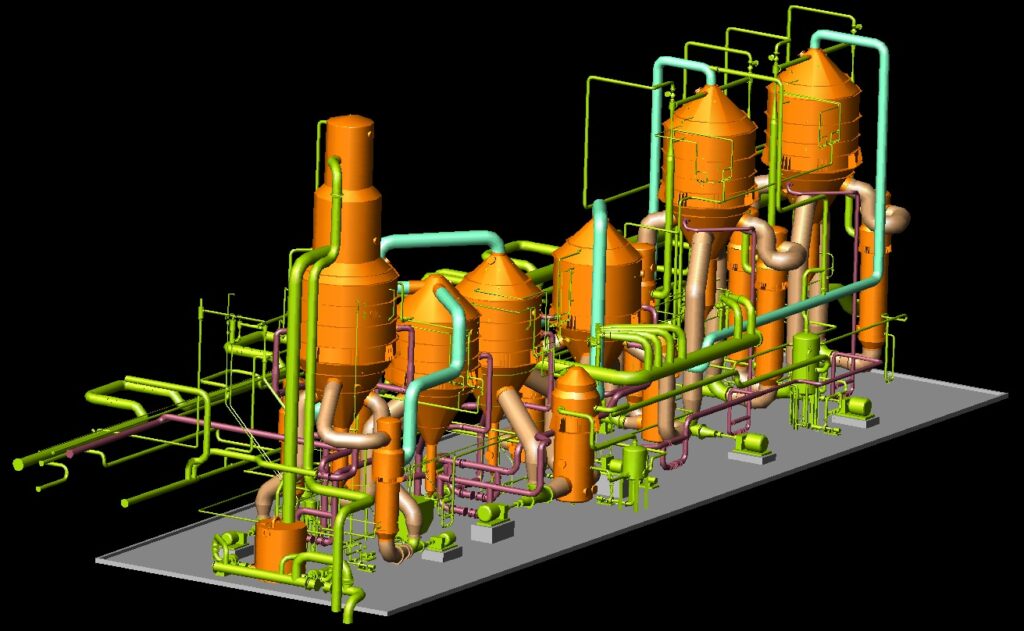
How Each Works
Falling-Film Evaporators
Falling-film evaporators operate by distributing liquid evenly as a thin film along the inside of vertical tubes. The solvent evaporates as the film flows downward, making this design energy-efficient and suitable for heat-sensitive solutions. Short residence times help reduce product degradation, while the large surface area ensures effective heat transfer.
Forced-Circulation Evaporators
Forced-circulation evaporators take a more aggressive approach. Liquor is pumped at high velocity through external heat exchangers before being returned to the evaporator body. The rapid circulation helps prevent solids from settling, reduces localized overheating, and minimizes fouling in the heat exchanger tubes. This makes FC designs exceptionally robust for brines with high scaling potential.
Scaling Tendencies
Scaling is one of the biggest challenges in processing brines rich in chlorides or total dissolved solids (TDS). Unchecked, scale formation reduces heat transfer efficiency, clogs equipment, and drives up maintenance costs.
- Falling-Film: The thin liquid film is prone to dry-out spots if distribution is uneven or heat flux is high. These dry patches become nuclei for scaling. For relatively clean feeds, falling-film units work well, but high-TDS streams can overwhelm them.
- Forced-Circulation: The high-velocity flow through the exchanger discourages solids from sticking. Pilot testing specifically measures fouling and scaling tendencies, providing real-world data that supports FC evaporators for challenging feeds. By maintaining turbulent flow, FC units are better able to tolerate high chloride brines than falling-film systems.
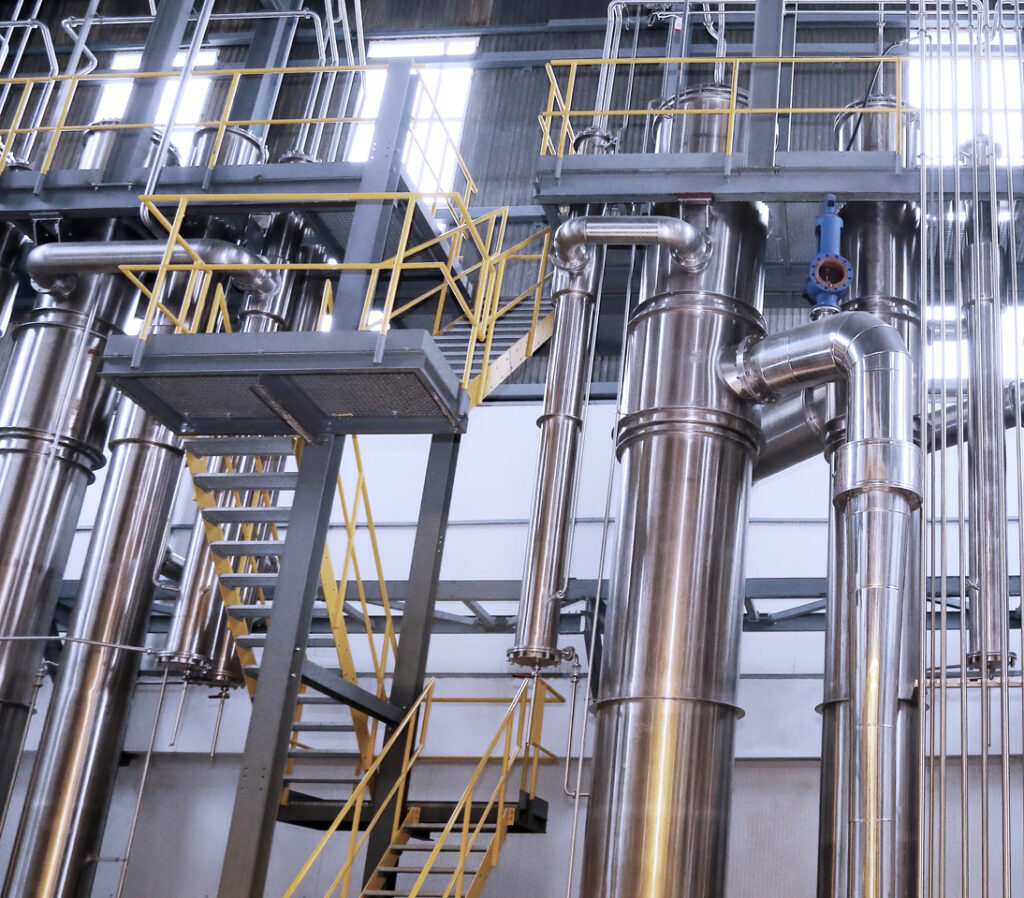
Case: High-Chloride Brines
Lithium brines from salt flats or industrial wastewaters often contain chlorides and other impurities that can aggressively attack materials and promote scale formation. For these, an FC evaporator is usually the safer choice. The design’s strong circulation limits deposition, while materials of construction—selected for corrosion resistance—help maintain long-term performance. Falling-film designs may still be used in pretreatment or polishing steps, but for the dirtiest feeds, FC typically wins out.
Energy & Throughput
Energy consumption is a central concern in any thermal separation process.
- Falling-Film: Highly efficient at heat transfer, especially when integrated into multi-effect setups. They are well-suited for large volumes of relatively clean streams, where energy savings outweigh the risks of fouling.
- Forced-Circulation: Consumes more pumping energy because of the need for high circulation velocities. However, the trade-off is reliable throughput and reduced downtime for cleaning. In many cases, lower availability due to fouling in a falling-film system can erase its theoretical energy advantage.
Instrumentation Tips
Proper instrumentation is vital for both types of evaporators, but especially for FC units handling scaling brines. Sensors that monitor pressure drop, flow velocity, and heat transfer coefficients can provide early warning of fouling. Integrating pilot-derived models into control systems helps operators maintain the process in its optimal zone, avoiding conditions where scale suddenly accelerates.
Maintenance & Cleaning
Falling-Film: Cleaning may be required frequently when scaling occurs, particularly if feed distribution systems clog. Mechanical cleaning of tubes is labor-intensive, and downtime increases operational expenses.
Forced-Circulation: Easier to maintain because solids are kept in suspension rather than allowed to stick. Heat exchangers are more accessible for mechanical or chemical cleaning. Combined with robust construction, the Whiting team delivers engineered solutions for long-term performance in the harshest environments—these systems generally offer higher availability in scaling service.
Selection Matrix
When deciding between falling-film vs forced-circulation evaporators, engineers must balance efficiency, fouling tolerance, and long-term operating costs.
| Criterion | Falling-Film Evaporator | Forced-Circulation Evaporator |
| Heat Transfer Efficiency | High | Moderate (due to thicker liquid layer) |
| Tolerance for High-TDS/Chlorides | Low to Moderate | High |
| Energy Consumption | Lower (less pumping) | Higher (pump energy required) |
| Maintenance Frequency | Higher in scaling service | Lower, easier cleaning |
| Best Use Case | Clean solutions, energy-sensitive processes | Scaling brines, high-chloride feeds |
In practice, many plants use both designs in complementary roles: falling-film for early concentration steps and FC for final concentration or crystallization feed preparation.
Conclusion
Both falling-film and forced-circulation evaporators have their place in industrial processing. For relatively clean feeds, falling-film systems deliver strong energy efficiency and compact operation. For aggressive, scaling brines—such as those found in lithium production—forced-circulation evaporators typically provide the reliability and uptime necessary to maintain profitable operations.
Bottom line: when facing scaling brines, the “falling film vs forced circulation evaporator” decision usually tilts toward FC, thanks to its ability to handle fouling and maintain throughput.
Minimize fouling, maximize uptime. Contact Whiting’s expert team to learn which evaporator design is right for your scaling brine challenges.

